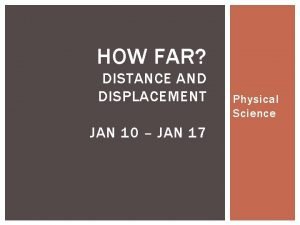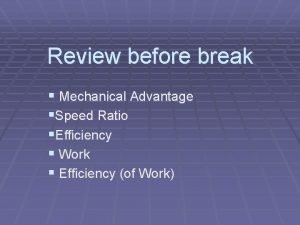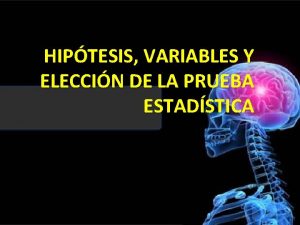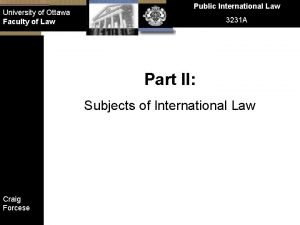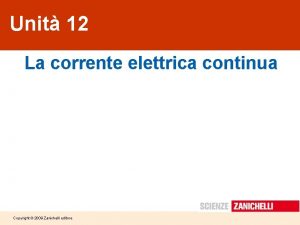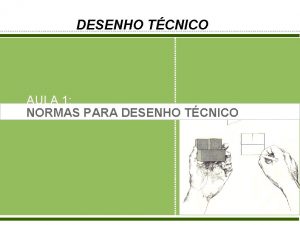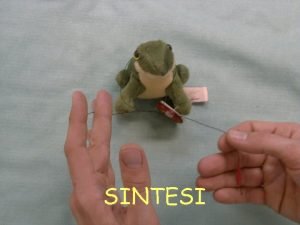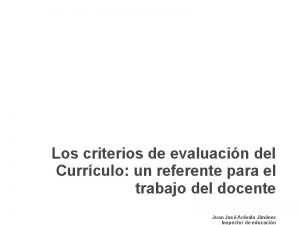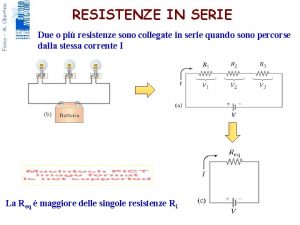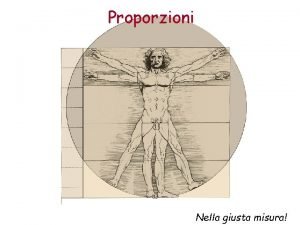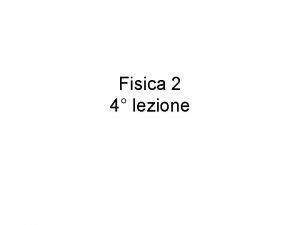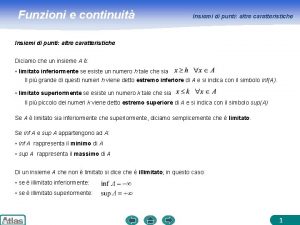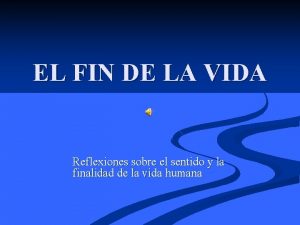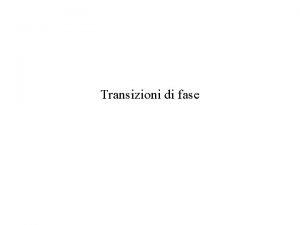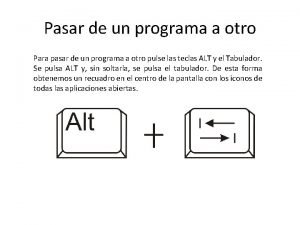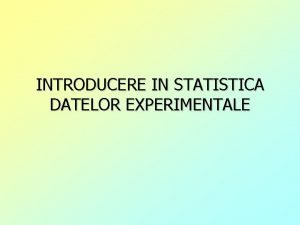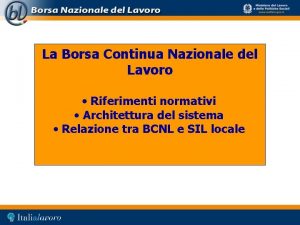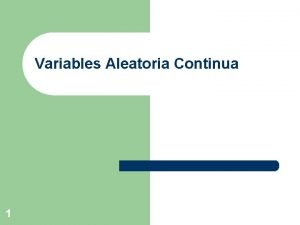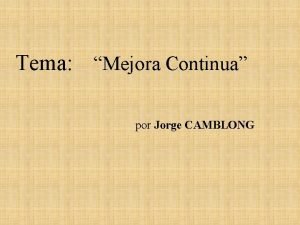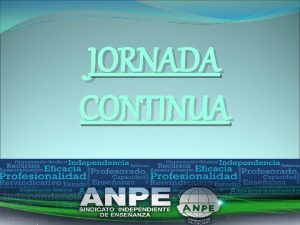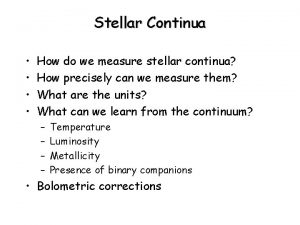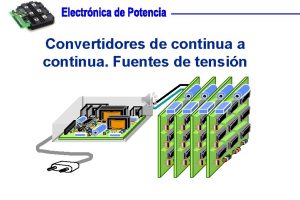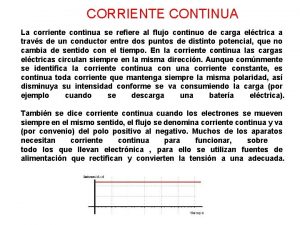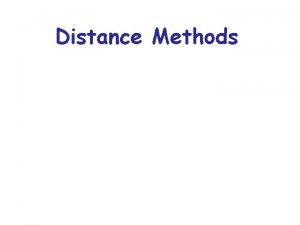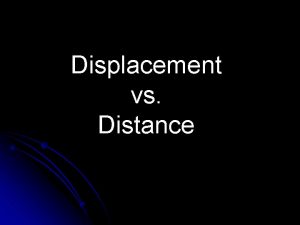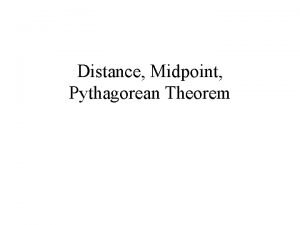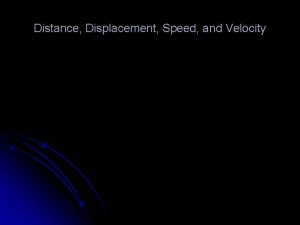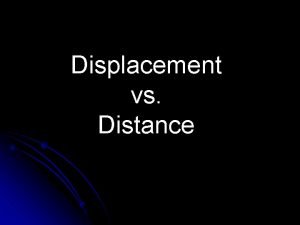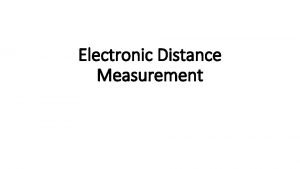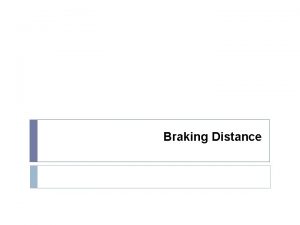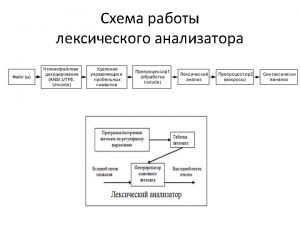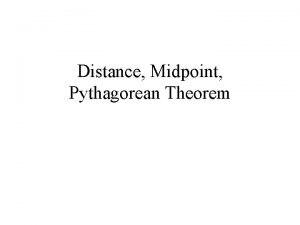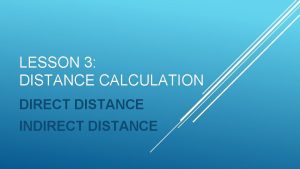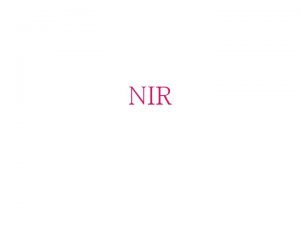Keeping the distance or spans of continua Alex




































- Slides: 36

Keeping the distance, or spans of continua Alex Karassev

What is a continuum? l In the plane or space: an object which is bounded q closed q connected q

Bounded diameter Bounded Unbounded

Closed Non-closed

Connected Not connected

Examples l Graphs simple closed curves q triods q l l l Locally connected continua Non-locally connected continua Indecomposable continua

Simple closed curves

Triods

Graphs CN Railways

Graphs "Digital Dandelion" or Map of Internet

Graphs Fullerene C 60 Molecule

Non-locally connected continua Topologist's sine curve And so on…

Decomposable continua

Indecomposable continua And so on… Knaster's Buckethandle (1922)

Span (Andrew Lelek, 1964) l l Two cars are traveling along a road network (graph). Each car must travel across the whole graph. The largest possible distance the cars can keep between them while moving along the graph is called the surjective span of the graph Similar idea can be used to define span of an arbitrary continuum

Circle Span = diameter

Triod l l l We can start at end points However, at some moment one of cars must reach the center So the largest possible value for span is the length of the leg span

Line segments (arcs) Examples of arcs Span = 0

More complicated cases? Simple closed curve

Alternative approach Continuum C X 1 X 2 (X 1, X 2) X 1 Product (square) C x C

Alternative approach Two paths in the continuum = one path in the square! (0, 1) 0 1 X 2 (1, 0)

Representation of distances ce = 0) Distance < 1/2 an t s i x n o g ia ( al x = 1 , 2 d Distance = 1/2 D 0 1 In general, the set of points with distance < d is represented by a symmetric neighbourhood of the diagonal

It can be very complicated… 1 m C Distance < 1. 5

Span of an arc is 0 1 (0, 1) Cx. C 0 Arc C Any path from (0, 1) to (1, 0) must intersect the diagonal, so the cars will be at the distance 0! (1, 0)

Square of a simple closed curve C C x C = Torus Diagonal

Visualizing the product: simple closed curve Torus can be viewed as a square with identified opposite sides

Variants of spans l l Span: both cars traverse the whole graph Semispan: only one car travels across the whole graph Symmetric span: if, at some moment, Car 1 is at the point A and Car 2 is at the point B, then there must be another moment when Car 1 is at B and Car 2 is at A Essential span (for simple closed curves)

Versions of span coincide for: circle "standard" triod

Question of Andrew Lelek (1995) l Do different types of spans always agree for certain classes of continua, particularly for triods and simple closed curves?

Some of our results Theorem (Logan Hoehn, Alex Karassev) No two of these versions of span agree for all simple closed curves or for all triods "Equivalent metrics and the spans of graphs", Colloquium Math, accepted

Our idea: predetermined distances l l Start with a neighbourhood of diagonal that have desired properties, and then define suitable metric This can be done by specifying closed sets in C x C which correspond to points with given distance (say 1 or 2)

Example: span is not equal to symmetric span for a simple closed curve Span = 2 (two blue circles) X 2 Symmetric span = 1 0 2 1 X 1

Example: span is not equal to semispan for a simple closed curve Semispan = 2 (two blue arcs) X 2 <1 0 2 1 X 1 Span = 1

Question of Howard Cook (1995) C 2 C 1 Is the span of C 1 less than the span of C 2?

It seems very easy in the case of convex curves… d 1< d 2 C 2 d 1 C 1

…but it is very complicated in general!
 What is a slanted roof called
What is a slanted roof called Church modes
Church modes Vodafone opco
Vodafone opco The mongol empire spans eurasia answer key
The mongol empire spans eurasia answer key Cambulac mongolia
Cambulac mongolia Computing spans with a stack
Computing spans with a stack The mongol empire spans eurasia worksheet answer key
The mongol empire spans eurasia worksheet answer key Difference between distance and displacement
Difference between distance and displacement The ratio of input distance to output distance
The ratio of input distance to output distance Pruebas estadisticas
Pruebas estadisticas V
V Jornada escolar continua o partida
Jornada escolar continua o partida University of ottawa
University of ottawa Plan cero colas
Plan cero colas Mejora continua trabajo final senati
Mejora continua trabajo final senati Leggi kirchhoff
Leggi kirchhoff Nbr 10068/87
Nbr 10068/87 викрил 4 0
викрил 4 0 Que es evaluacion continua
Que es evaluacion continua Fisica
Fisica Função continua
Função continua Proprietà magnetiche della materia zanichelli
Proprietà magnetiche della materia zanichelli Proprietà delle proporzioni schema
Proprietà delle proporzioni schema Distribuzione continua di carica
Distribuzione continua di carica Teorema degli zeri
Teorema degli zeri Frase de vida
Frase de vida Continua health alliance
Continua health alliance Gammageno
Gammageno Escala de stapel
Escala de stapel Fili di sutura classificazione
Fili di sutura classificazione Educacion continua abogados puerto rico
Educacion continua abogados puerto rico Dicionário pnad contínua
Dicionário pnad contínua Variabila aleatoare
Variabila aleatoare Teorema sulle funzioni continue
Teorema sulle funzioni continue Dada la siguiente secuencia rusia 2018 rusia 2018
Dada la siguiente secuencia rusia 2018 rusia 2018 Mejora continua
Mejora continua Borsa nazionale del lavoro
Borsa nazionale del lavoro







